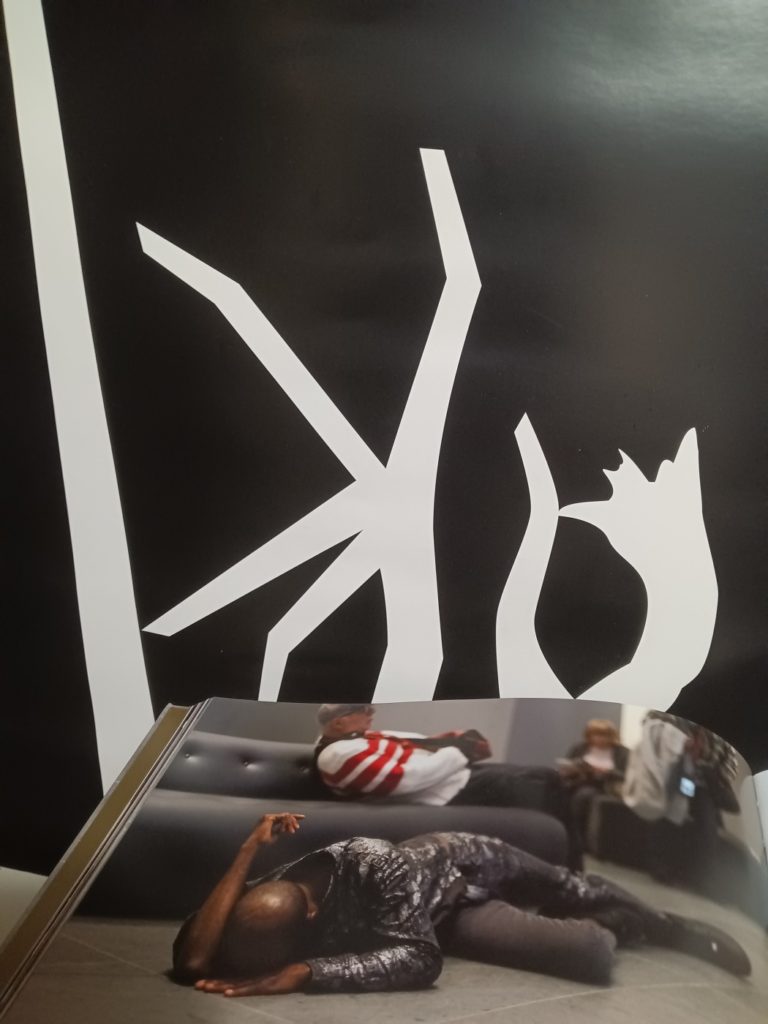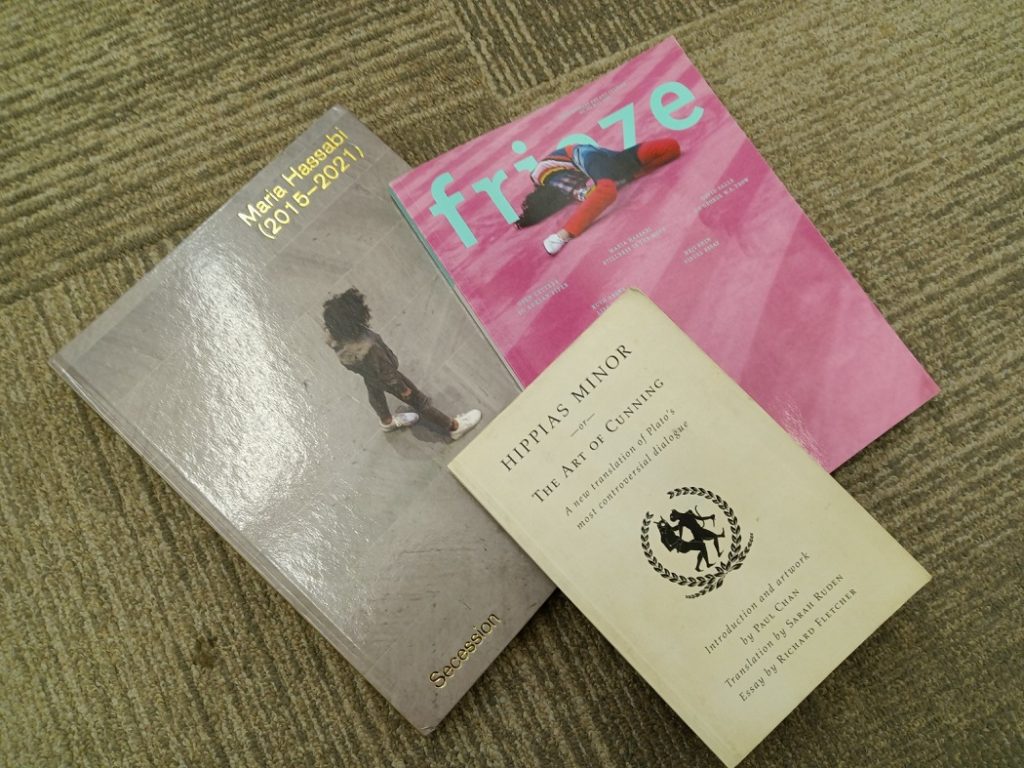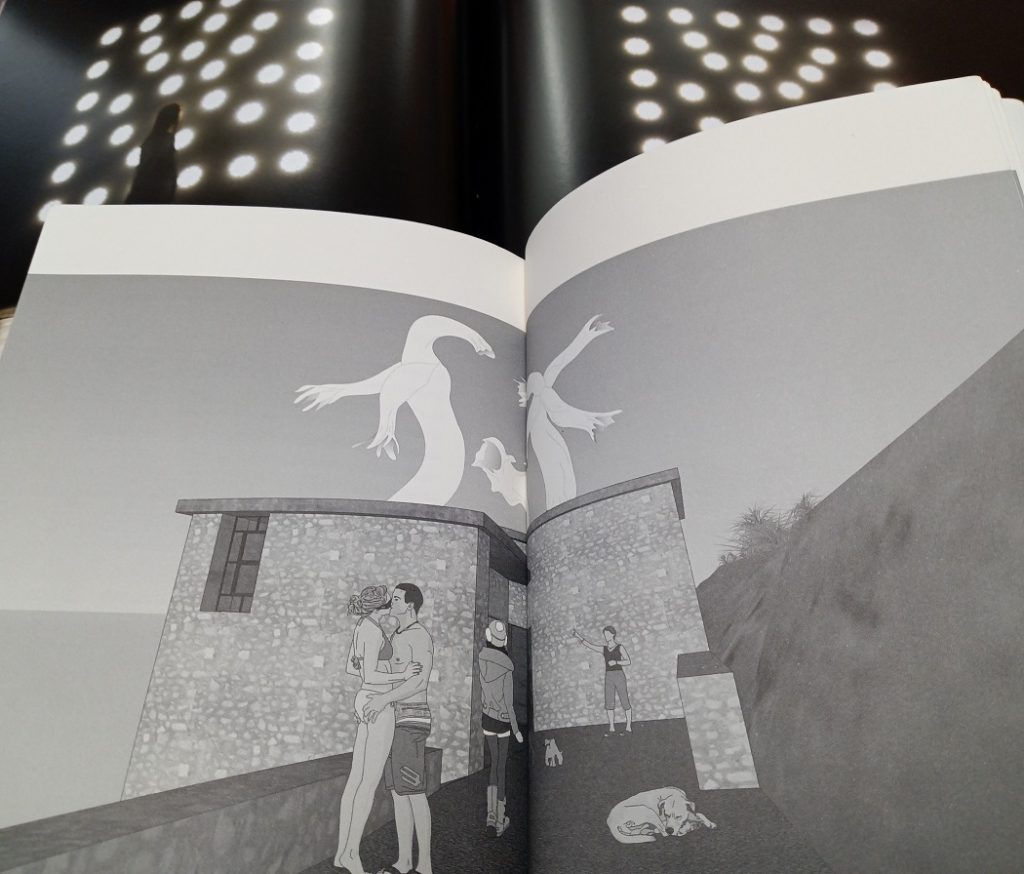A common thread in these two works [STAGED?, 2016, and STAGING, 2017] and my previous live installations is the very strict script that the dancers follow, which is transcribed on paper, describing each movement and their counts – we call it the Bible. The original material for the diptych is a two-hour solo, which I created using my body, experimenting with specific ideas, images and forms of physicality. From there, I taught it to the dancers, finalizing with their bodies the counts, precise spacing and the gaze. This two-hour solo provides the base script for each of the works and it remakes itself to fit the concepts for each.
– Maria Hassabi in ‘Stillness Is The Move’, an interview with Harry Thorne for FRIEZE No. 195, May 2018, pp. 142-143.
The texts began to shimmer and unravel, becoming like what someone who did not know how words were meant to work would compose: by feel and by necessity.
– Paul Chan in ‘New New Testament’ (New York: Badlands Unlimited; Basel: Schaulager, Laurenz Foundation, 2014), p. 14, quoted in Richard Fletcher ‘Socrates 420’ in Paul Chan, Richard Flectcher and Karen Marta (eds) ‘Hippias Minor or The Art of Cunning (New York: Badlands Unlimited; Athens: DESTE Foundation, 2015), p. 123.
In many ways, this project is precisely what I set out to achieve with Minus Plato and my general approach to collaborations with contemporary artists.
– Minus Plato in ‘Good Forms: Paul Chan’s Hippias Minor or The Art of Cunning’, www.minusplato.com, 11th June 2015.


